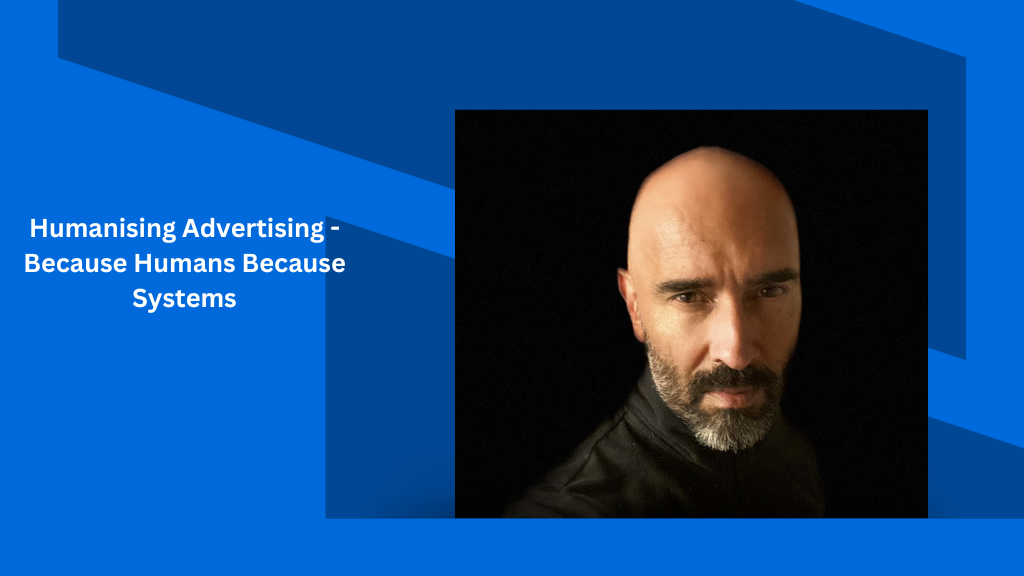By Dilip Shukla, General Manager, Reset Digital Europe
Look at that picture of me, with only some carefully placed lighting and a little selfie training, looking boldly out from the place where there is no light and yet, in that very moment, charging out into a new and beautiful dawn . . . of digital advertising.
So, let’s discuss the pain and the excitement of my estimate that the promise of digital advertising is only about 21% fulfilled.
Its about systems and I am unimpressed to an extent that I cannot describe by the “direct responsification” of the current digital advertising system. Calling it “performance” is too ironic for me to dissect here. The philosophy of hyper targeting, personalisation at scale and pseudo data driven advertising that perhaps applies to the needs of 18% of advertisers gets increasingly counterproductive the more you need to move people at scale. It is the imbalance that hurts.
Whilst this system makes me throw my artisan crafted coffee, I wouldn’t discard it, it belongs somewhere in almost every advertising plan. What it needs as a balance and as the leading emphasis is the humanisation of advertising.
When you look at how this gets done, it is transformational for the problems it solves and the opportunities it creates.
How?
First understand that human beings have complex, dynamic identities. Our industry works on simplistic, static stereotypical identity. We are beings of emotions and feelings and we have life stories. Our industry measures our clicks and (when it can) our demographics, maybe our location and treats us as rational decision makers. But our emotions and feelings and our values are why we do what we do. Our decisions are irrational. Our industry systems, rational.
But irrational does not mean unmeasurable or unpredictable or unscientific.
Scientists like Daniel Kahneman and Clare Graves have created measurable models of human identity and irrationality. Some of these models track multiple (60+) emotions. Others include factors around how you see yourself, what combination of leader, caregiver, professor, rebel or warrior are you? How much stability or excitement do you want right now?
This is incredibly useful because it explains, fundamentally why people make their decisions. What has been missing is the ability to measure these factors at scale.
This is where I declare my ulterior motive, Reset Digital measures these factors in the programmatic world, we call it cognitive data.
How does it work? Media and brands and ads all use emotions and feelings to attract people, our tech detects and measure all of these. So we know what emotions and feelings attracted someone to that media at that time and place, we then serve an ad that matches those emotions and feelings. So you reach people based on the fundamental human principles of why we do what we do as human beings
image.png
And the result is radically better advertising outcomes. Reset has case histories and analyses that prove this but here I will focus on what it means for our industry.
Every day, people make billions of media choices. Each one of those media choices is an indication of how that person feels at that time and place, at that moment. A huge and actionable database of emotions and feelings and opportunity to understand human beings.
This will cause a revaluation of “quality” media. In this case “quality” means how much it tells you about how a person wants to feel there and then.
It also means you are more likely to buy the media than just the audience because there is a real data driven importance to the moment when a person is open to your communication.
It discourages the use of media that projects feelings like anger, fear, confusion and disorientation because if a person is immersed in these emotions, they are not open to the quite different emotions that advertising usually projects.
This is also leading to exploration of the effect on well being and the human impact of advertising and media.
This also revalues and reinvolves creativity, with a transparent, actionable, system based, data driven link between media agency, creative and Client teams based on why their prospects and customers are doing what they are doing.
And relating the impact of data driven communication ideas and human receptiveness back to brand and business impact takes advertising back into the C Suite.
Do we replace the “direct responsification”? No, its actually quite useful when you use the humanisation as the leading counterbalance. The systems work together.
Perhaps the biggest opportunity lies in just reengaging with a population that questions advertising and how it behaves. How would you feel about an industry that tries to understand you for what you care about, what you are trying to achieve in life and how you are feeling here and now? An industry that cares more about how it affects the world.
Do you want to be a part of this? Get in touch if you do









